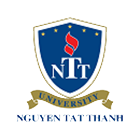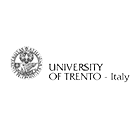Tutorials
Spectrum Access Ecosystem : Dynamic Radio Spectrum Access as a Service
Simultaneous Energy and Information Transmission
Game Theory, Learning, and Cognitive Radio
Spectrum Access Ecosystem : Dynamic Radio Spectrum Access as a Service
Keivan Navaie, School of Computing and Communications, Lancaster University, UK
Abstract
In this tutorial we introduce concepts and methods for providing spectrum-access-as-a-service (SaaS) to coexisting wireless systems utilizing the same radio spectrum each with different connectivity requirements. We then present a multi-objective optimization framework to investigate the fundamental performance bounds in a fully dynamic SaaS system. Various system architectures based on full/partial virtualisation are then investigated and their performances are compared. We then look at the SaaS as a digital ecosystem and an innovation framework where we discuss its horizontal scalability and self-organization behaviour as well as its resiliency, robustness, utility and pricing. SaaS-based techniques are then discussed for providing connectivity to mission critical autonomous objects such as autonomous vehicles and robots. Applications of data science and machine learning in future planning of such systems are also explained. We then present several use-cases followed by conclusions and discussions on the challenges and open problems in service oriented provisioning of radio spectrum.
About the speaker
 Keivan Navaie received his Ph.D. in Electrical and Computer Engineering in 2004. From March to November 2004, he was with the School of Mathematics and Statistics, Carleton University, Ottawa, Canada, as a Postdoctoral Research Fellow. From December 2004 to September 2006, he was with the Broadband Communication and Wireless System (BCWS) Centre, Carleton University, Ottawa, Canada where he was the project manager of BCWS participation in European Union 6th Framework integrated project, the Wireless World Initiative New Radio (WINNER) on beyond 3G wireless systems. From September 2006 to July 2011 he was with the Department of Electrical and Computer Engineering, TMU, Tehran, Iran, where he founded Wireless Innovation Laboratory based on a major research grant provided by the largest Iranian Mobile operator (MCI) for designing and implementing tools to obtain big data analytics and incorporate it in improving users' Quality of Experience. From July 2011 to January 2015 he was been with the School of Electrical and Computer Engineering, University of Leeds, Leeds, UK. He is currently an Associate Professor in with the School of Computing and Communications, Lancaster University, Lancaster, UK. He held visiting research scientist position in Telefonica Research and Innovation, Barcelona, Spain.
Keivan Navaie received his Ph.D. in Electrical and Computer Engineering in 2004. From March to November 2004, he was with the School of Mathematics and Statistics, Carleton University, Ottawa, Canada, as a Postdoctoral Research Fellow. From December 2004 to September 2006, he was with the Broadband Communication and Wireless System (BCWS) Centre, Carleton University, Ottawa, Canada where he was the project manager of BCWS participation in European Union 6th Framework integrated project, the Wireless World Initiative New Radio (WINNER) on beyond 3G wireless systems. From September 2006 to July 2011 he was with the Department of Electrical and Computer Engineering, TMU, Tehran, Iran, where he founded Wireless Innovation Laboratory based on a major research grant provided by the largest Iranian Mobile operator (MCI) for designing and implementing tools to obtain big data analytics and incorporate it in improving users' Quality of Experience. From July 2011 to January 2015 he was been with the School of Electrical and Computer Engineering, University of Leeds, Leeds, UK. He is currently an Associate Professor in with the School of Computing and Communications, Lancaster University, Lancaster, UK. He held visiting research scientist position in Telefonica Research and Innovation, Barcelona, Spain.
His research interests lie in the field of wireless communications, smart cities, mobile computing, networking and green communications. He also works on wireless communication technologies including radio resource allocation for wireless communication systems, dynamic spectrum allocation, cognitive radio networks and cooperative communications. Dr. Navaie is on the editorial board of the Transactions on Emerging Telecommunications Technologies, and Cyber-Physical Systems. He has published more than 100 peer-reviewed journal articles, book chapters and conference papers and his works have taken more than 1200 citations. His paper, "Access strategies for spectrum sharing in fading environment: Overlay, underlay and mixed," was in the IEEE Communication Society Best readings on Cognitive Radio 2012. He has been on the technical program committee of different IEEE conferences, including Globecom, ICC, VTC and WCNC, and chaired some of their symposia. He has also served as Co-Chair of Wireless Network Track, IEEE VTC-2012 Yokohama, Japan, IEEE 8th International Workshop on Wireless Network Measurements WiNMee 2012, Paderborn, Germany, IEEE, Wireless Networks and Security Track, IEEE VTC2014-Spring, Seoul, South Korea, the Mobile and Wireless Networks Track, IEEE WCNC 2014, Istanbul, Turkey. He is the recipient of the 2011 IEEE Iran Section Young Investigator award. Dr. Navaie is a Senior Member of the IEEE, and a Chartered Engineer in the UK.
Simultaneous Energy and Information Transmission
Selma Belhadj Amor, INRIA Postdoctoral Research Fellow at Laboratoire CITI (Joint Lab between Université de Lyon, INRIA and INSA de Lyon), Lyon, France
Samir M. Perlaza, INRIA Research Scientist at Laboratoire CITI (Joint Lab between Université de Lyon, INRIA and INSA de Lyon), Lyon, France
Abstract
This tutorial aims to familiarize the attendees with the new communication paradigm of simultaneous energy and information transmission (SEIT) in wireless networks.
The tutorial is divided into four parts.
In the first part, the relevance of SEIT is highlighted as a powerful technique to ensure a more efficient energy utilization in future "green" communication systems, e.g, 5G networks, small cells, Wi-Fi networks, sensor networks and ad hoc networks.
In the second part, particular attention is paid to existing techniques for implementing SEIT in point-to-point wireless communications. In particular, power allocation and beamforming techniques are reviewed. At the same time, strong emphasis is put on the fundamental limits of this technology using basic notions from information theory.
In the third part, multi-user scenarios are studied and the key aspects of the energy-information trade-off are studied in both centralized networks, e.g, cellular networks and decentralized networks, e.g., sensor networks and ad hoc networks. In the latter, basic notions of game theory are studied to model the stable operating points of these networks.
In the final part, practical aspects are tackled putting an emphasis on the main future challenges of SEIT in the context of 5G. For instance, front-end architectures allowing both energy-harvesting and information decoding are studied. At the same time, aspects regarding in-band and out-band energy transmission as well as co-located and non-cololated receivers and energy harvesters are discussed.
About the speakers
 Selma Belhadj Amor (Ph.D., Télécom ParisTech 2015) is an INRIA Postdoctoral Research Fellow at Laboratoire CITI (Joint Lab between Université de Lyon, INRIA, and INSA de Lyon), Lyon, France. She received the B.Sc. and M.Eng. degrees in Electrical Engineering in 2009 and 2011, respectively, from Grenoble-INP Ensimag, Grenoble, France. She also received the M.Sc. degree in Mathematics and Computer-Science in 2011 jointly from Grenoble-INP Ensimag and Université Joseph Fourier (UJF), Grenoble, France. She received the Ph.D. degree in Electrical Engineering in 2015 from Télécom ParisTech, Paris, France.
Selma Belhadj Amor (Ph.D., Télécom ParisTech 2015) is an INRIA Postdoctoral Research Fellow at Laboratoire CITI (Joint Lab between Université de Lyon, INRIA, and INSA de Lyon), Lyon, France. She received the B.Sc. and M.Eng. degrees in Electrical Engineering in 2009 and 2011, respectively, from Grenoble-INP Ensimag, Grenoble, France. She also received the M.Sc. degree in Mathematics and Computer-Science in 2011 jointly from Grenoble-INP Ensimag and Université Joseph Fourier (UJF), Grenoble, France. She received the Ph.D. degree in Electrical Engineering in 2015 from Télécom ParisTech, Paris, France.
 Samir M. Perlaza (Ph.D., Télécom ParisTech 2011) is an INRIA Research Scientist at Laboratoire CITI (Joint Lab between Université de Lyon, INRIA and INSA de Lyon), Lyon, France. He is also a visiting research collaborator at the School of Applied Science at Princeton University (NJ, USA). He received the M.Sc. and Ph.D. degrees from Ecole Nationale Supérieure des Télécommunications (Télécom ParisTech), Paris, France, in 2008 and 2011, respectively. Previously, from 2008 to 2011, he was a Research Engineer at France Télécom - Orange Labs (Paris, France). He has held long-term academic appointments at the Alcatel-Lucent Chair in Flexible Radio at Supélec (Gif-sur-Yvette, France); at Princeton University (Princeton, NJ) and at the University of Houston (Houston, TX). His research interests lie in the overlap of signal processing, information theory, game theory and wireless communications. Dr. Perlaza has been distinguished by the European Commission with an Alban Fellowship in 2006 and a Marie Skłodowska-Curie Fellowship in 2015. He was also one of the recipients of the the Best Student Paper Award at Crowncom in 2009.
Samir M. Perlaza (Ph.D., Télécom ParisTech 2011) is an INRIA Research Scientist at Laboratoire CITI (Joint Lab between Université de Lyon, INRIA and INSA de Lyon), Lyon, France. He is also a visiting research collaborator at the School of Applied Science at Princeton University (NJ, USA). He received the M.Sc. and Ph.D. degrees from Ecole Nationale Supérieure des Télécommunications (Télécom ParisTech), Paris, France, in 2008 and 2011, respectively. Previously, from 2008 to 2011, he was a Research Engineer at France Télécom - Orange Labs (Paris, France). He has held long-term academic appointments at the Alcatel-Lucent Chair in Flexible Radio at Supélec (Gif-sur-Yvette, France); at Princeton University (Princeton, NJ) and at the University of Houston (Houston, TX). His research interests lie in the overlap of signal processing, information theory, game theory and wireless communications. Dr. Perlaza has been distinguished by the European Commission with an Alban Fellowship in 2006 and a Marie Skłodowska-Curie Fellowship in 2015. He was also one of the recipients of the the Best Student Paper Award at Crowncom in 2009.
Game Theory, Learning, and Cognitive Radio
Samson LASAULCE, CNRS Director of Research with L2S - CentraleSupelec, France
Panayotis MERTIKOPOULOS, Associate Researcher, French National Center for Scientific Research (CNRS), France
Abstract
This tutorial aims at showing the link between game theory and cognitive radio operation algorithms. The tutorial comprises two parts. The first part provides an introduction to game theory, the most famous game models (which include both static and dynamic games), and some important solution concepts that arise in game theory. Several simple distributed and learning algorithms will be introduced to establish the link between the presented game-theoretic solution concepts and algorithms. The focus of the second part in on online learning and online optimization. The basic goal in online optimization is to react optimally to an unknown objective function that evolves over time due to exogenous factors that are beyond the decision-maker's control (direct or indirect). As such, online optimization methods are readily applicable to a wide array of systems that are neither static nor stationary, but instead evolve over time in a potentially arbitrary fashion - such as the channel of a mobile wireless user. Along the way, we will provide many application examples so as to allow the participants to apply the presented notions immediately after the tutorial.
About the speakers
 Samson Lasaulce is a CNRS Director of Research in the Laboratory of Signals and Systems (joint lab between CNRS, Supélec, and Univ. Paris Sud). He has also been a professor with the Department of Physics at Ecole Polytechnique. Before joining CNRS he has been working for five years in private R&D companies (Motorola Labs and Orange Labs). Dr. Lasaulce is the recipient of several awards. Dr. Lasaulce has been serving as an Associate Editor for the IEEE Transactions on Signal Processing. His current research interests lie in distributed networks with a focus on game theory, network information theory, learning, distributed optimization, network control for communication and energy networks. He is a co-author of the book "Game Theory and Learning for Wireless Networks: Fundamentals and Applications".
Samson Lasaulce is a CNRS Director of Research in the Laboratory of Signals and Systems (joint lab between CNRS, Supélec, and Univ. Paris Sud). He has also been a professor with the Department of Physics at Ecole Polytechnique. Before joining CNRS he has been working for five years in private R&D companies (Motorola Labs and Orange Labs). Dr. Lasaulce is the recipient of several awards. Dr. Lasaulce has been serving as an Associate Editor for the IEEE Transactions on Signal Processing. His current research interests lie in distributed networks with a focus on game theory, network information theory, learning, distributed optimization, network control for communication and energy networks. He is a co-author of the book "Game Theory and Learning for Wireless Networks: Fundamentals and Applications".
 Panayotis Mertikopoulos received his diploma degree in physics from the University of Athens in 2003, his M.Sc. and M.Phil. degrees in mathematics from Brown University, USA, in 2005 and 2006 respectively, and his PhD degree in physics from the University of Athens in 2010. During 2010–2011, he was a post-doctoral researcher at the Economics Department of École Polytechnique, Paris, France. Since 2011, he has been a CNRS Researcher a the Laboratoire d'Informatique de Grenoble, France. P. Mertikopoulos has been an Embeirikeion Foundation Fellow since 2003 and was the recipient of the best paper award in NetGCoop'12. He was a track co-chair of IFORS 2014, TPC co-chair of WiOpt 2014, and general co-chair of AlgoGT 2013. His main research interests lie in game theory, learning, optimization, stochastic analysis, and their applications to wireless networks.
Panayotis Mertikopoulos received his diploma degree in physics from the University of Athens in 2003, his M.Sc. and M.Phil. degrees in mathematics from Brown University, USA, in 2005 and 2006 respectively, and his PhD degree in physics from the University of Athens in 2010. During 2010–2011, he was a post-doctoral researcher at the Economics Department of École Polytechnique, Paris, France. Since 2011, he has been a CNRS Researcher a the Laboratoire d'Informatique de Grenoble, France. P. Mertikopoulos has been an Embeirikeion Foundation Fellow since 2003 and was the recipient of the best paper award in NetGCoop'12. He was a track co-chair of IFORS 2014, TPC co-chair of WiOpt 2014, and general co-chair of AlgoGT 2013. His main research interests lie in game theory, learning, optimization, stochastic analysis, and their applications to wireless networks.














































